In 2024, the landscape of website design has undergone a remarkable transformation, making the process easier and more accessible than ever before. Thanks to advancements in technology, innovative tools, and evolving design practices, designers now have an array of resources at their disposal to streamline the website creation process.
You may be interested in the following related articles as well.
- 35+ The Top Award Winning Websites Handpicked by Pro Designers and Developers
- 15 Simple, Clean Minimal CV Resume Templates
- Best Brand Guidelines Templates For Robust Brand Presence
- 15+ Best Photoshop Actions: Top Picks for Photographers
Designing a Website in 2024

In the dynamic landscape of digital innovation, designing a website in 2024 has become more accessible and streamlined than ever before. With the advent of cutting-edge technologies, intuitive design tools, and a wealth of resources, both seasoned professionals and aspiring designers are empowered to create stunning, user-centric websites with unprecedented ease. In this article, we’ll explore the key factors contributing to the simplification of website design in 2024 and how they are revolutionizing the way we approach digital creation.
Table Of Content
Intuitive Website Builders and Content Management Systems (CMS)
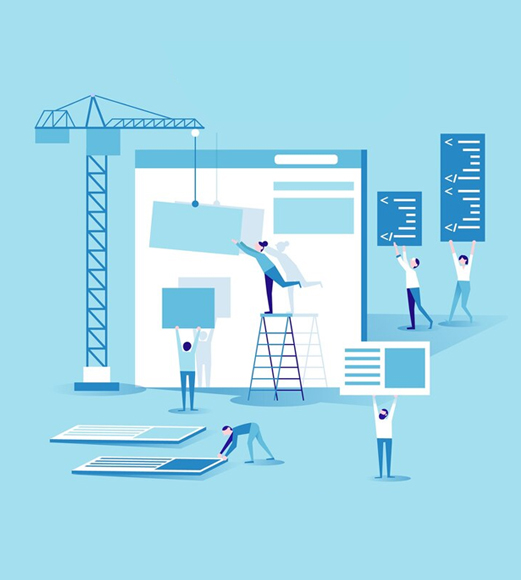 One of the most significant advancements in website design is the proliferation of intuitive website builders and content management systems (CMS). Platforms like WordPress, Wix, Squarespace, and Shopify offer user-friendly interfaces and customizable templates that simplify the design process for designers of all skill levels. With drag-and-drop functionality and a wide range of pre-designed elements, designers can effortlessly create visually stunning websites without the need for extensive coding knowledge. These platforms also provide robust features for managing content, optimizing SEO, and integrating third-party plugins, making it easier than ever to build and maintain professional-grade websites.
One of the most significant advancements in website design is the proliferation of intuitive website builders and content management systems (CMS). Platforms like WordPress, Wix, Squarespace, and Shopify offer user-friendly interfaces and customizable templates that simplify the design process for designers of all skill levels. With drag-and-drop functionality and a wide range of pre-designed elements, designers can effortlessly create visually stunning websites without the need for extensive coding knowledge. These platforms also provide robust features for managing content, optimizing SEO, and integrating third-party plugins, making it easier than ever to build and maintain professional-grade websites.
In the rapidly evolving landscape of website design, intuitive website builders and content management systems (CMS) have emerged as indispensable tools for designers and developers alike. These platforms offer user-friendly interfaces and customizable templates that simplify the design process, making it easier than ever to create professional-grade websites without the need for extensive coding knowledge. Let’s delve deeper into how these intuitive tools are revolutionizing the way websites are designed and managed in 2024.
1. Accessibility and Ease of Use
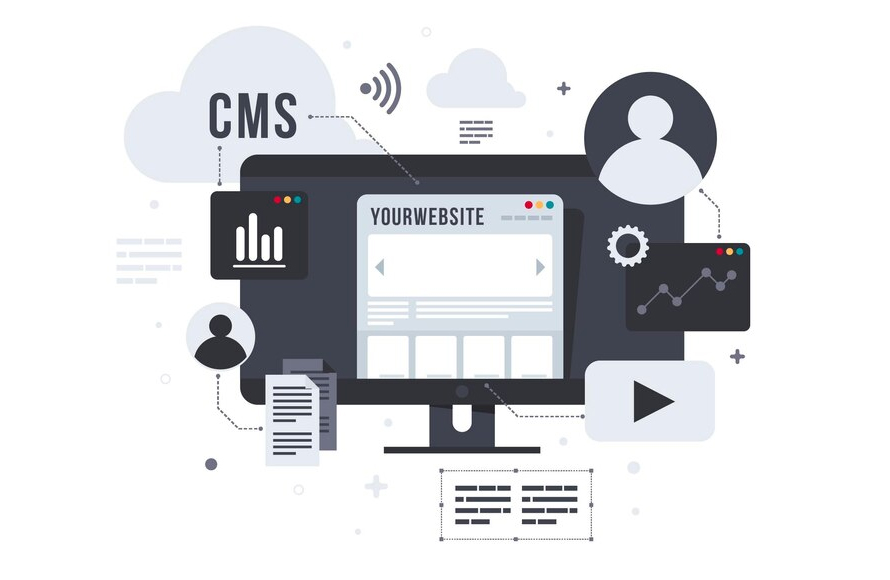
One of the primary benefits of intuitive website builders and CMS platforms is their accessibility and ease of use. With drag-and-drop functionality and a variety of pre-designed elements, designers can quickly assemble visually stunning websites without having to write a single line of code. This democratization of website design empowers individuals with varying levels of technical expertise to bring their creative visions to life, whether they’re seasoned professionals or first-time designers. By eliminating the need for complex coding languages and technical skills, these platforms open up the world of web design to a broader audience, fostering innovation and creativity in the digital space.
2. Customization and Flexibility
Despite their user-friendly interfaces, intuitive website builders and CMS platforms offer a high degree of customization and flexibility. Designers can choose from a wide range of pre-designed templates and layouts, or they can create their own designs from scratch using customizable elements and styling options. This level of flexibility allows designers to tailor their websites to meet the unique needs and preferences of their clients or target audience, ensuring that each website stands out from the crowd while still maintaining a cohesive and professional aesthetic. Whether it’s adjusting colors and fonts, rearranging layout elements, or integrating third-party plugins and extensions, these platforms provide designers with the tools they need to bring their creative visions to life.
3. Time and Cost Efficiency

In addition to being accessible and customizable, intuitive website builders and CMS platforms offer significant time and cost savings compared to traditional web design methods. By streamlining the design process and automating repetitive tasks, these platforms enable designers to create websites in a fraction of the time it would take using traditional coding methods. This not only allows designers to take on more projects and meet tight deadlines but also reduces the overall cost of website development for clients. With no need to hire expensive developers or invest in specialized software, businesses and individuals can create professional-grade websites on a shoestring budget, leveling the playing field and empowering small businesses and entrepreneurs to compete with larger corporations in the digital marketplace.
4. Collaboration and Client Management
Another key advantage of intuitive website builders and CMS platforms is their built-in collaboration and client management features. These platforms allow designers to collaborate with clients and team members in real-time, sharing design mockups, collecting feedback, and making revisions on the fly. This streamlines the communication process and ensures that everyone is on the same page throughout the design process, reducing the likelihood of misunderstandings or miscommunications. Additionally, many CMS platforms offer built-in client management tools, allowing designers to easily manage multiple client accounts, track project progress, and invoice clients directly from the platform. This centralized approach to client management simplifies administrative tasks and improves overall efficiency, allowing designers to focus more time and energy on the creative aspects of their work.
5. Scalability and Future-Proofing

Finally, intuitive website builders and CMS platforms offer scalability and future-proofing, allowing websites to grow and evolve alongside the needs of the business or organization. Whether it’s adding new pages, integrating e-commerce functionality, or optimizing for mobile devices, these platforms provide the flexibility and scalability needed to adapt to changing requirements and technologies. Additionally, many CMS platforms offer regular updates and security patches, ensuring that websites remain secure and up-to-date with the latest industry standards and best practices. This helps to future-proof websites against emerging threats and technologies, providing peace of mind for both designers and clients alike.
In conclusion, intuitive website builders and content management systems (CMS) have revolutionized the way websites are designed and managed in 2024. With their accessibility, customization, time and cost efficiency, collaboration features, and scalability, these platforms empower designers and developers to create professional-grade websites with ease. Whether you’re a seasoned professional or a first-time designer, intuitive website builders and CMS platforms offer the tools and resources needed to bring your creative visions to life in the digital space.
You may check : 100 Best Fonts For 2024
Artificial Intelligence (AI) and Machine Learning
In 2024, the integration of artificial intelligence (AI) and machine learning technologies has revolutionized website design by automating repetitive tasks and providing valuable insights. AI-powered design tools can analyze user data, predict trends, and generate personalized recommendations, enabling designers to create more tailored and effective websites. From automated layout suggestions to intelligent content optimization, AI empowers designers to work smarter and more efficiently, freeing up time for creativity and innovation. By harnessing the power of AI, designers can create websites that not only look great but also deliver exceptional user experiences tailored to the needs and preferences of their target audience.

Artificial Intelligence (AI) and Machine Learning technologies have permeated every aspect of our lives, and website design is no exception. In 2024, these cutting-edge technologies have revolutionized the website design process, making it more efficient, personalized, and dynamic than ever before.
1. Automated Design Assistance
One of the most significant impacts of AI and Machine Learning on website design is the automation of repetitive tasks and design assistance. Designers can now leverage AI-powered tools to generate layout suggestions, color palettes, and typography choices based on user preferences and design trends. These tools analyze vast amounts of data to identify patterns and insights, providing designers with valuable recommendations to enhance their designs. By automating routine design tasks, AI frees up designers’ time to focus on more creative and strategic aspects of the design process, resulting in faster turnaround times and higher-quality designs.
2. Personalized User Experiences
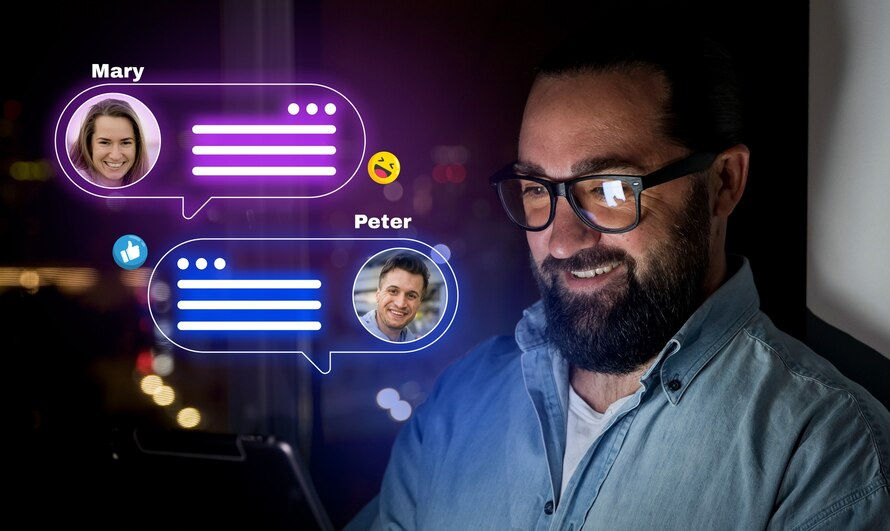
AI and Machine Learning also play a crucial role in creating personalized user experiences on websites. By analyzing user behavior, preferences, and demographics, AI-powered algorithms can dynamically adjust website content, layout, and recommendations to match each user’s unique needs and interests. For example, e-commerce websites can use AI to suggest products based on past purchases, browsing history, and demographic data, enhancing the shopping experience and driving sales. Similarly, content-based websites can use AI to recommend articles, videos, or products tailored to each user’s interests, increasing engagement and retention. By delivering personalized experiences, websites can better meet the expectations of their users and foster deeper connections with their audience.
3. Enhanced Content Creation

AI and Machine Learning technologies have also transformed the way content is created and curated on websites. Natural Language Processing (NLP) algorithms can generate high-quality, human-like content based on input from designers or existing website content. These AI-generated texts can be used to fill placeholder content during the design process or to automate the creation of blog posts, product descriptions, or marketing copy. Additionally, AI-powered content curation tools can analyze vast amounts of online content to identify relevant articles, images, or videos that align with the website’s theme or target audience. By automating content creation and curation, AI enables designers to create richer, more engaging websites without the need for extensive manual input.
4. Intelligent User Support
 In addition to enhancing the design and content aspects of websites, AI and Machine Learning technologies can also improve user support and interaction. Chatbots powered by AI can provide instant, personalized assistance to users, answering common questions, resolving issues, and guiding users through the website navigation process. These virtual assistants can be integrated into websites to provide round-the-clock support, improving user satisfaction and reducing the workload on human support agents. Moreover, AI-powered sentiment analysis tools can monitor user feedback and sentiment on social media, forums, or customer reviews, enabling website owners to identify potential issues or areas for improvement and take proactive measures to address them.
In addition to enhancing the design and content aspects of websites, AI and Machine Learning technologies can also improve user support and interaction. Chatbots powered by AI can provide instant, personalized assistance to users, answering common questions, resolving issues, and guiding users through the website navigation process. These virtual assistants can be integrated into websites to provide round-the-clock support, improving user satisfaction and reducing the workload on human support agents. Moreover, AI-powered sentiment analysis tools can monitor user feedback and sentiment on social media, forums, or customer reviews, enabling website owners to identify potential issues or areas for improvement and take proactive measures to address them.
In conclusion, Artificial Intelligence (AI) and Machine Learning technologies have revolutionized the website design process, making it more efficient, personalized, and dynamic than ever before. From automated design assistance to personalized user experiences, enhanced content creation, and intelligent user support, AI has become an indispensable tool for designers looking to create cutting-edge websites that meet the evolving needs of their users. As AI continues to advance, we can expect to see even more innovative applications in website design, further enhancing the user experience and pushing the boundaries of creativity in the digital space.
You may check: 25 Best Procreate Brushes Of 2023
Augmented Reality (AR) and Virtual Reality (VR)
Another key trend shaping website design in 2024 is the integration of augmented reality (AR) and virtual reality (VR) technologies. These immersive technologies enable designers to create interactive and engaging experiences that captivate users and drive engagement. From virtual product tours to interactive 3D models, AR and VR elements add a new dimension to website design, allowing users to explore products and services in a more intuitive and immersive way. By incorporating AR and VR into their websites, designers can create memorable experiences that leave a lasting impression on users, enhancing brand awareness and driving conversions.
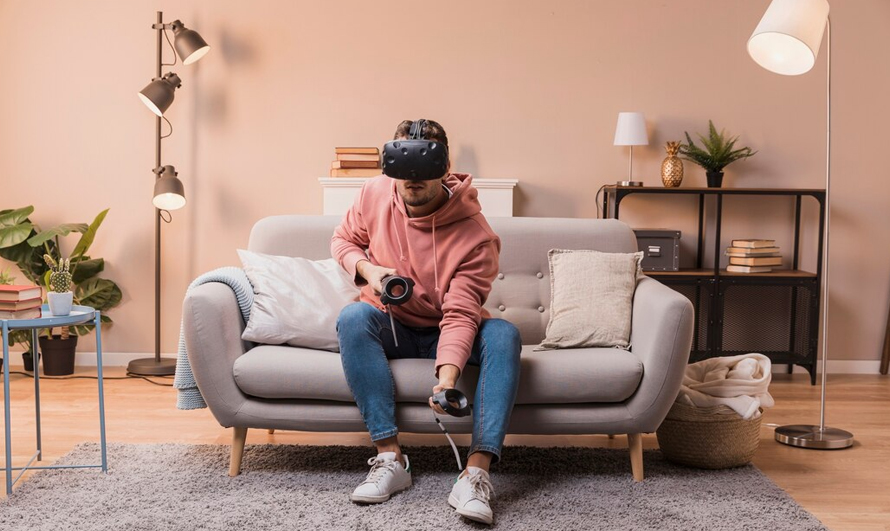
Augmented Reality (AR) and Virtual Reality (VR) have emerged as transformative technologies that are reshaping the landscape of website design in 2024. These immersive technologies offer new opportunities for designers to create interactive and engaging experiences that captivate users and differentiate their websites from the competition.
1. Immersive Experiences
One of the most significant impacts of AR and VR on website design is the ability to create immersive experiences that transport users to virtual environments. With AR, designers can overlay digital content onto the real world, allowing users to interact with virtual objects and information in their physical surroundings. For example, an e-commerce website could use AR to enable customers to visualize how furniture would look in their home before making a purchase, or a travel website could use AR to provide virtual tours of destinations. Similarly, VR allows designers to create fully immersive environments that users can explore and interact with using VR headsets. Whether it’s a virtual museum, an interactive game, or a virtual showroom, VR experiences offer a level of engagement and immersion that traditional websites cannot match.
2. Enhanced Product Visualization

AR and VR also offer new opportunities for product visualization, allowing users to see and interact with products in ways that were previously impossible. For e-commerce websites, AR enables customers to try on clothing, test out cosmetics, or preview home decor items in their own environment using their smartphone or tablet. This immersive shopping experience enhances confidence in purchasing decisions and reduces the likelihood of returns, ultimately driving sales and improving customer satisfaction. Similarly, VR enables users to explore products in a virtual showroom or test drive vehicles in a virtual environment, providing a realistic and interactive way to experience products before making a purchase.
3. Interactive Storytelling
AR and VR technologies also open up new possibilities for interactive storytelling on websites. With AR, designers can create interactive narratives that unfold as users move through physical spaces, blurring the lines between the digital and physical worlds. For example, a historical website could use AR to overlay historical photos, videos, and information onto real-world landmarks, allowing users to explore the past in a dynamic and engaging way. Similarly, VR enables designers to create immersive storytelling experiences that transport users to virtual worlds where they can interact with characters, solve puzzles, and explore richly detailed environments. These interactive narratives deepen user engagement and create memorable experiences that leave a lasting impression.
4. Gamification and Engagement

AR and VR technologies also lend themselves well to gamification, allowing designers to create interactive games and challenges that keep users engaged and entertained. With AR, designers can create location-based games that encourage users to explore their surroundings and complete tasks in exchange for rewards or achievements. For example, a tourism website could use AR to create a scavenger hunt that leads users to different landmarks and attractions, or a fitness website could use AR to gamify outdoor workouts by adding virtual obstacles and challenges. Similarly, VR enables designers to create immersive gaming experiences that transport users to fantastical worlds where they can battle enemies, solve puzzles, and embark on epic quests. These gamified experiences drive user engagement and encourage repeat visits to the website.
In conclusion, Augmented Reality (AR) and Virtual Reality (VR) technologies are revolutionizing website design in 2024, offering new opportunities for immersive experiences, enhanced product visualization, interactive storytelling, and gamification. By leveraging these immersive technologies, designers can create websites that captivate users, drive engagement, and differentiate their brands in a crowded digital marketplace. As AR and VR continue to evolve, we can expect to see even more innovative applications in website design, further enhancing the user experience and pushing the boundaries of creativity in the digital space.
Focus on User Experience (UX) and Accessibility
 In recent years, there has been a growing emphasis on user experience (UX) and accessibility in website design. Design frameworks and guidelines, such as Material Design and WCAG (Web Content Accessibility Guidelines), provide designers with best practices for creating intuitive, user-friendly websites that cater to diverse audiences. By prioritizing usability and inclusivity, designers can ensure that their websites are easy to navigate and accessible to all users, regardless of their abilities or devices. This focus on UX and accessibility not only improves the overall user experience but also helps to enhance brand credibility and loyalty.
In recent years, there has been a growing emphasis on user experience (UX) and accessibility in website design. Design frameworks and guidelines, such as Material Design and WCAG (Web Content Accessibility Guidelines), provide designers with best practices for creating intuitive, user-friendly websites that cater to diverse audiences. By prioritizing usability and inclusivity, designers can ensure that their websites are easy to navigate and accessible to all users, regardless of their abilities or devices. This focus on UX and accessibility not only improves the overall user experience but also helps to enhance brand credibility and loyalty.
In the rapidly evolving world of website design, there has been a notable shift towards prioritizing user experience (UX) and accessibility. In 2024, designers are placing greater emphasis on creating websites that not only look visually appealing but also provide intuitive navigation, seamless interactions, and inclusivity for all users.
1. Intuitive Navigation and User-Friendly Design
One of the key aspects of user experience (UX) design is ensuring that websites are easy to navigate and user-friendly. In 2024, designers are placing a strong emphasis on intuitive navigation structures, clear labeling, and logical information architecture to guide users through the website effortlessly. By employing techniques such as card sorting, usability testing, and user journey mapping, designers can gain insights into user behaviors and preferences, allowing them to optimize the website’s layout and navigation flow for a more intuitive user experience.
Furthermore, designers are leveraging responsive design principles to ensure that websites are accessible and functional across a wide range of devices and screen sizes. With the increasing prevalence of mobile and tablet usage, responsive design has become essential for delivering a consistent and seamless experience to users regardless of the device they’re using. By prioritizing responsive design, designers can ensure that users can access and interact with the website’s content comfortably and effectively, enhancing the overall user experience.
2. Inclusive Design and Accessibility

In addition to focusing on intuitive navigation and user-friendly design, designers are also placing a greater emphasis on accessibility and inclusivity in website design. In 2024, there is a growing recognition of the importance of designing websites that are accessible to users with disabilities, including visual impairments, hearing impairments, and motor disabilities.
Designers are incorporating accessibility features such as alternative text for images, keyboard navigation support, and color contrast adjustments to ensure that websites are usable by all users, regardless of their abilities or assistive technologies. By adhering to web accessibility standards such as the Web Content Accessibility Guidelines (WCAG), designers can create websites that are more inclusive and accessible to a wider range of users, enhancing the overall user experience and ensuring equal access to information and services.
Furthermore, designers are increasingly adopting inclusive design principles, which involve designing products and services that are accessible and usable by the widest possible audience, including those with disabilities. By considering the diverse needs and abilities of users from the outset of the design process, designers can create more inclusive and user-friendly websites that benefit everyone, regardless of their individual capabilities or limitations.
In conclusion, the focus on user experience (UX) and accessibility has become increasingly prominent in website design in 2024. By prioritizing intuitive navigation, responsive design, and inclusive design principles, designers can create websites that provide a seamless and accessible experience for all users, regardless of their abilities or assistive technologies. By placing a greater emphasis on user experience (UX) and accessibility, designers can create websites that are not only visually appealing but also functional, usable, and inclusive for all users.
Abundance of Design Resources and Communities
The abundance of design resources, tutorials, and communities has also contributed to the simplification of website design in 2024. Online platforms like Behance, Dribbble, and GitHub serve as hubs for inspiration, collaboration, and skill-sharing, allowing designers to learn from their peers, explore new techniques, and stay updated on the latest trends. With a wealth of resources at their fingertips, designers can continue to hone their craft and push the boundaries of creativity. Additionally, the rise of online courses and workshops has made it easier than ever for aspiring designers to learn the fundamentals of website design and gain practical skills that can be applied to real-world projects.

In the ever-evolving field of website design, the availability of design resources and the presence of vibrant design communities play a crucial role in shaping the creative landscape. In 2024, designers have access to an abundance of resources and communities that provide inspiration, education, and support, fostering innovation and collaboration in the digital space.
1. Online Design Platforms and Marketplaces
One of the most significant developments in recent years is the proliferation of online design platforms and marketplaces, where designers can access a vast array of design assets, templates, and tools. Websites like Adobe Stock, Envato Elements, and Creative Market offer a treasure trove of resources, including stock photos, graphics, icons, fonts, and templates, that designers can use to enhance their designs and streamline their workflow. These platforms provide designers with a convenient and cost-effective way to access high-quality assets and stay up-to-date with the latest design trends, saving time and effort in the design process.
2. Design Software and Tools
 In addition to online platforms and marketplaces, designers have access to a wide range of design software and tools that empower them to bring their creative visions to life. Industry-leading tools like Adobe Creative Cloud, Sketch, Figma, and Canva offer powerful features and intuitive interfaces that make it easier than ever to design stunning websites and digital experiences. Whether it’s creating wireframes and prototypes, editing images and graphics, or collaborating with team members, these tools provide designers with the flexibility and functionality they need to realize their design concepts and deliver exceptional results.
In addition to online platforms and marketplaces, designers have access to a wide range of design software and tools that empower them to bring their creative visions to life. Industry-leading tools like Adobe Creative Cloud, Sketch, Figma, and Canva offer powerful features and intuitive interfaces that make it easier than ever to design stunning websites and digital experiences. Whether it’s creating wireframes and prototypes, editing images and graphics, or collaborating with team members, these tools provide designers with the flexibility and functionality they need to realize their design concepts and deliver exceptional results.
3. Online Design Communities and Forums
Another valuable resource for designers is the presence of online design communities and forums, where designers can connect with peers, share ideas, and seek feedback on their work. Platforms like Behance, Dribbble, and GitHub serve as hubs for inspiration, collaboration, and skill-sharing, allowing designers to showcase their work, explore new techniques, and learn from others in the industry. These communities provide a supportive and collaborative environment where designers can network, gain exposure, and stay motivated to push the boundaries of creativity in their own work.
4. Online Courses and Tutorials

Furthermore, designers have access to a wealth of online courses, tutorials, and educational resources that enable them to develop their skills and stay updated on the latest design trends and techniques. Websites like Udemy, Skillshare, and Coursera offer a wide range of courses on topics ranging from graphic design and user experience (UX) design to web development and digital marketing. These courses provide designers with the opportunity to learn at their own pace, from the comfort of their own home, and gain practical skills that they can apply to real-world projects. Additionally, many design communities and forums offer tutorials, workshops, and mentorship programs to support designers in their professional development journey.
In conclusion, the abundance of design resources and communities in 2024 has democratized access to design knowledge and expertise, empowering designers to create stunning, user-centric websites and digital experiences. From online platforms and marketplaces to design software and tools, online communities and forums, and online courses and tutorials, designers have everything they need to hone their craft, stay inspired, and push the boundaries of creativity in the digital space. By tapping into these resources and communities, designers can continue to innovate, collaborate, and elevate the field of website design for years to come.
Conclusion
Designing a website in 2024 has become more accessible and streamlined than ever before, thanks to advancements in technology, intuitive design tools, and a wealth of resources. From intuitive website builders and AI-powered design tools to immersive technologies like AR and VR, designers have everything they need to create stunning, user-centric websites that captivate and engage users. By focusing on user experience (UX) and accessibility and leveraging the power of design communities and resources, designers can continue to push the boundaries of creativity and innovation, shaping the future of website design for years to come.
But forget just keeping up! The online world is a whole new game! With tech changing how people shop every day, you need a website that keeps pace. Digital Nomads HQ – Web Design Agency is your secret weapon. They design websites that are stunning and user-friendly, putting your business ahead of the curve. Need an online store that pops? Digital Nomads HQ will help you dominate the digital world. Trust them to take your online presence to the next level and watch your success soar!

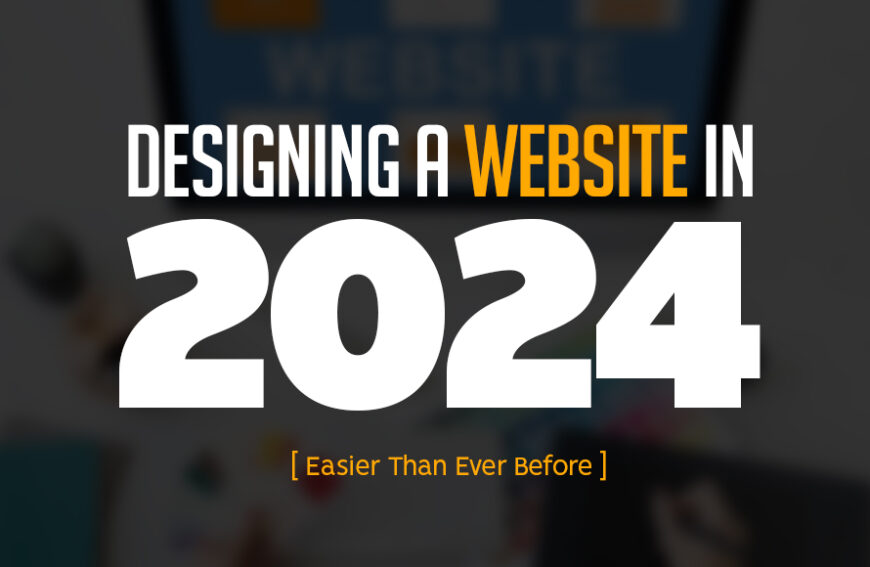

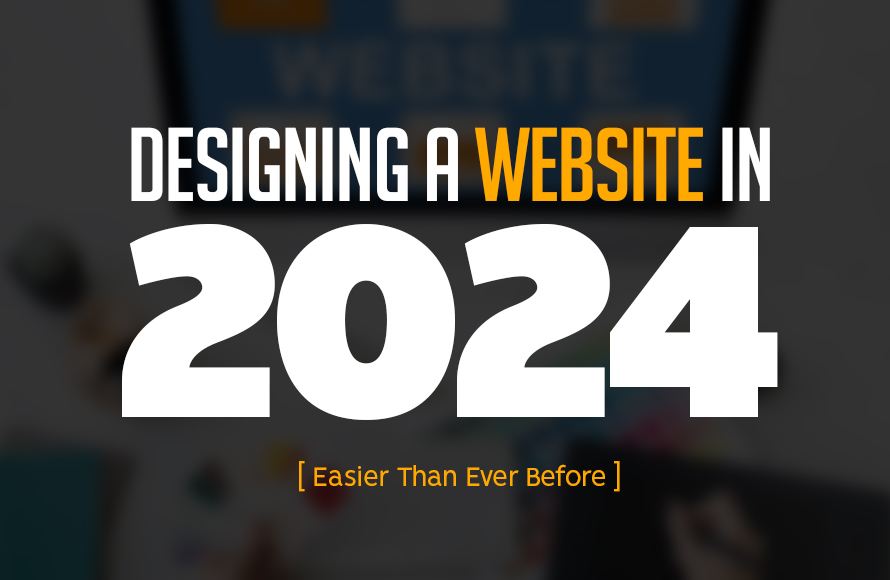














While I agree that website design has become more accessible, it’s important to remember that complex websites or those with specific functionalities may still require professional help.
Well, It’s important to remember that ‘easy’ doesn’t always mean ‘good’. Just because anyone can build a website now doesn’t guarantee it will be successful.
I appreciate the author’s emphasis on accessibility. It’s important to remember that even with easier design tools, creating inclusive websites is still crucial.